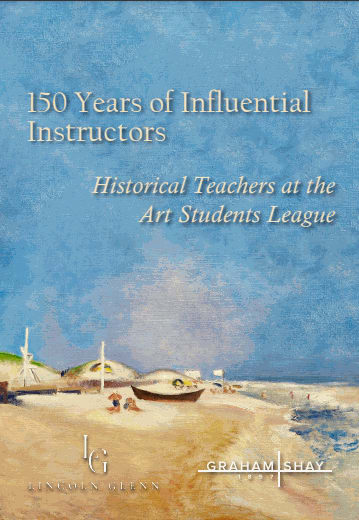Born in Malnate, Italy, in 1900, Luigi Lucioni became one of America's well-known landscape painters, whose work has been noted for its heightened realism and photographic attention to detail. Lucioni immigrated to the United States with his family in 1911 and settled in Union City, New Jersey. He studied, in succession, at Cooper Union, at the National Academy of Design, and at the Tiffany Foundation in Oyster Bay, Long Island. At the last, John Sloan, Kenneth Hayes Miller, Gifford Beal, and Childe Hassam taught classes.
In 1920, he studied with William Auerbach Levy at the National Academy of Design, and in 1922 was the recipient of a Tiffany Foundation Scholarship. The Fellowship enabled him to go back to his homeland in 1924 to study Italian primitives. He responded immediately to the realism of early Renaissance painting, which left a lasting impression on his work.
As he incorporated realism into his own work, Lucioni's paintings became more meticulous. His crisp, somewhat flat pattern and detail have been likened to the microscopic approach of the fifteenth-century Flemish masters. Lucioni's attention to detail can also be traced to his early work as an etcher in 1922, when he mastered that technique which stresses sharp linear precision, a skill instrumental in developing his precise painting style. Success soon followed, with a show at Ferargil Galleries in 1927, the receipt of several medals, and the sale of a still life to the Metropolitan Museum.
In 1939, Lucioni bought a farmhouse and barn near Manchester Depot. The latter he turned into a studio, where he continued to paint and make etchings of the surrounding countryside for the next fifty years. In the 1930s, while European modernism was gaining momentum in the United States, Lucioni remained committed to realism.
He later taught at the Art Students' League in New York, and maintained a studio in that city's picturesque Washington Square. He also had a longstanding love of the opera, and corresponded with various opera singers, including Giovanni Martinelli, Gladys Swarthout, Cesara Valletti, and others.
He won many honors during his distinguished career. He took first prize in 1939 at the Carnegie International Exhibition for a portrait of Ethel Waters. His 1941 portrait of John La Farge was voted best painting by visitors to the Corcoran Biennial in Washington, D.C. Lucioni was a member of the Society of American Etchers (Brooklyn), and the Allied Art Association. Despite his lack of conscious effort toward the experimental or avant-garde, Lucioni's work has always been popular. He spent his last years in Union City, New Jersey and died in 1988.




